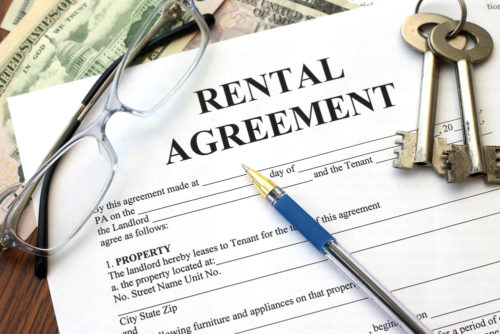The minimum wage in the United States has remained the same for over a decade, offering a meager $7.25 an hour since 2009, despite years of inflation and growth.
With each passing day, the popular “Fight for $15” movement continues to gain momentum around the country, as overworked and underpaid Americans join in the battle for an increased minimum wage of $15 per hour.
In the meantime, minimum wage continues to see its growth on the state level or through individual corporate policy, such as Target offering a minimum of $13 per hour and Amazon’s $15 an hour.
So, can you really live on minimum wage? And can you afford to live in your own apartment on minimum wage? We explore.
Table of Contents
Cost of Living Factors by Area
Minimum wage is set forth by the Fair Labor Standards Act, affecting companies of all kinds without discrimination, including public, private, federal, and state employers.
The cost of living varies depending on your location. Certain parts of the country, such as the Midwest, are cheaper than areas along the coast, where commerce is greater and cities are bigger. It’s important to live somewhere you can afford because your expenses will far exceed just your rent. The cost of living also considers expenses such as your health insurance, groceries, and taxes.
The more expensive the city, the higher the minimum wage will likely be. Expenses also vary by city and neighborhood, so be sure to thoroughly research your options before choosing the best place to live.
Rent in Different Areas
Just like the minimum wage varies by area, so does the cost of rent. More populated states tend to be significantly more expensive than others because there is a more competitive market that drives demand and increases costs. This is expressed through the Consumer Price Index (CPI), which may be a good determinant of whether you can afford to live independently in a particular city.
Houston, Texas and Amarillo, Texas are two vastly different cities when it comes to the cost of living. The cost of living in Houston is just below the national average with a cost of living index of 65.08 out of 100, compared to Amarillo’s cost of living of only 30.62 out of 100.
The population is a huge factor, with Houston home to 3.2 million people, while the Amarillo population is less than 200,000. The more people there are, the less property there is available, so the costs rise in response to that demand.
Wages in Different Areas
With federal wages stagnant, employees look to their state legislators for help. If you have the fortune of working in a state with a higher minimum wage than the federal, you can benefit from your state’s higher pay.
For example, Alaska and Pennsylvania are two states with very different policies on the minimum wage. While Pennsylvania mirrors the federal rate, Alaska recently gave its minimum wage a boost to $9.89 per hour. Alaska also does not include tips when calculating an employee’s minimum wage, so tip-based employees are entitled to the $9.89 per hour minimum, in addition to their tips.
Overtime is regulated by the Alaska Division of Labor Standards and Safety, requiring time-and-a-half for overtime pay, or $14.81 per hour for all hours exceeding 40 on each paycheck.
In contrast, Pennsylvania’s minimum wage matches the federal wage. At just $7.25 per hour, minimum-wage employees stand to make only $15,080 each year, compared to the $20,571.20 that Alaskans who work full time are guaranteed each year under their state’s minimum wage.
Personalized Cost of Living Factors
Regardless of an area’s cost of living, there are other specific factors that impact your personal cost of living. Each person makes decisions that impact their individual costs of living, such as the neighborhood where you live or the size of your rental home.
You may not hold a high-paying job, but you can still reduce costs in other ways. You can choose to take public transportation for your daily commute instead of paying the high costs for your personal vehicle.
You can also make better choices for your entertainment, as well. Eating at home instead of dining out can save you hundreds of dollars each month, and utilizing free public or community services, such as public schools and community fitness centers, can help you reduce expensive tuition and pricey memberships.
Livelihood Costs
The personal cost of living varies from person to person, depending on how you live your life. Some people may live just a few minutes from their job, while others are forced to commute miles. How close you live to your job will dramatically affect your cost of living, because things such as fuel, insurance, and repairs can make your monthly expenses skyrocket.
Some people are current or former students, plagued by massive student loans and compounding interest. Others may not have student loans, but they could be weighed down by exorbitant rent for a downtown pad, a high car payment, or vast amounts of credit card debt.
30% Rule
To decide what you can afford, consider utilizing the 50/20/30 rule to control your spending. The idea is to limit your personal expenses to leave room for your mandatory expenses. Fifty percent of your income should go to your needs and 20% to savings and debt. That leaves 30% for luxury expenses. These are things you don’t need but want, such as a vacation, a new purse, or a flashy car.
By categorizing and limiting your expenses, you ensure that you are putting your money where it matters.
Tips for Renting With a Minimum Wage Job
Even if you are living on a tight budget, there are ways to reduce your costs and still live comfortably. If your landlord is amenable, a long-term lease could help you save money each month by committing to a longer rental period.
Living in more populated areas such as downtown or in historic districts could cost far more than an apartment in the suburbs. You could find a much bigger place with more amenities once you venture out of the city a bit.
Just because it is cheaper to live outside the city, it may not be the most economical option if you have to commute to the city for school or work. Carefully consider your circumstances to see which living arrangement will work best for you before you sign the lease.
Create a Budget
It’s not enough to just make money; you have to manage your money, too. The less money you have, the more important it is that you spend it wisely, so setting a personal budget can help you remain on track.
Streamline your expenses by examining luxury expenses, such as streaming subscriptions or premium memberships, and get rid of any services you don’t use.
Boost Your Income
If you have been considering another job, you’re not alone. Many Americans have a side job to help ends meet or pad their pockets with a little extra income.
If you have a marketable skill, you could make extra money as a writer, graphic designer, or photographer. Ridesharing services offer quick cash if you have the right wheels, and odd jobs such as dog walking, food and grocery delivery, or even landscaping can all bring in extra income.
The best side hustles give you extra income for all of those extra luxuries that make life so much more enjoyable.
Get a Roommate
Sharing your apartment with a roommate could solve many of your problems. It alleviates the financial burden, allowing you to share the rent with another party. You can also share the cost of utilities, which might easily top several hundred dollars each month.
Many people find roommates through work or school, but there are other ways to find a roommate, too. CraigsList used to be the only option for connecting with potential roommates, but today, sites such as Roommates.com, RoomieMatch, PadMapper, and Reddit are all popular online resources for your search.
Look Into Government Assistance
It’s easy to get stuck in the cycle of poverty, but the truth is that you are not alone. The government has resources to help you, and welfare is just one solution to give you some extra help when you are living on minimum wage. Healthcare programs such as Medicare and Medicaid are designed to assist with your medical needs, while the Electronic Benefit Transfer (EBT) uses a debit card to distribute food stamp benefits.
The U.S. Department of Housing (HUD) can help with affordable housing through privately subsidized properties, public housing, and the Housing Choice Voucher Program, or Section 8 housing.
2020 brings new changes to the state minimum wage in over 20 states. The changes affect more than half of all Americans, who will all enjoy higher wages. Four more states, plus several more countries, will also increase their wages later in 2020.
Progress is being made, but in the meantime, responsible planning and a smart budget could allow you your very own apartment to enjoy.
Image Source: https://depositphotos.com/





